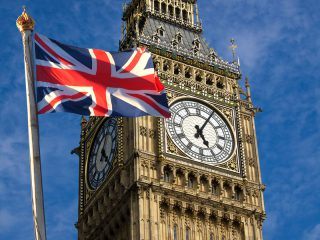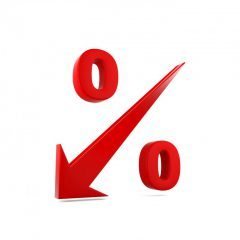House Price Growth Down Across England
House price growth is down on a monthly basis across England, according to the latest House Price Index from the Land Registry and the Office for National Statistics (ONS).
In the UK as a whole, house prices have risen by 6.9% in the last year and 0.1% over the month to October.

House Price Growth Down Across England
However, this trend is reversed in England, as prices have dropped by 0.1% month-on-month. Nevertheless, growth still stands at 7.4% on an annual basis.
The annual rate of growth is only marginally higher in the capital, at 7.7%, with London house prices falling by a significant 1.2% between September and October.
The East of England enjoyed the greatest monthly and annual growth, while the North East experienced the greatest month-on-month decline, as well as the slowest annual increase.
Russell Quirk, the Founder and CEO of eMoov, comments on the latest index: “It would seem that London has taken a backseat when it comes to the driving force behind UK house price growth, having suffered a 1.2% drop month-on-month, despite monthly growth creeping up by 0.1% across the UK as a whole.
“The industry will really start to stutter to a halt now as Christmas fast approaches, and so any panic over falling house prices should really be taken with a pinch of salt. Not only will buyer demand drop right off as thoughts turn to the stress of the festive season, but many sellers will also freeze the marketing of their property, ready to hit the ground running again in January.”
He continues: “Although there is a great marketing push behind the Boxing Day bounce, and the number of people that log on after the Queen’s speech to surf the property portals, this has little benefit to actual sellers, as those full of Christmas merriment are unlikely to be serious in their search. So it really is worthwhile to enjoy your time with friends and family and prepare for the onslaught of buyer interest that will come with the New Year.”
The Senior Economist at PwC, Richard Snook, also has his take on the recent figures: “The final official housing release from the ONS and Land Registry before Christmas shows that average UK house inflation was 6.9% in the year to October – barely changed from 7.0% in September. This takes the average price of a UK home to £217,000.
“Whilst the annual inflation rate remains high, prices have barely moved over the last three months. If this trend continues into 2017, we will see a pronounced drop in growth rates in the New Year. We project that UK house price growth for 2017 could range between 2-5%.
“The picture was mixed across the regions, with monthly price declines of over 1% in London, the North East and the North West. However, monthly growth is volatile and it is too early to call a slowdown in these areas.”
We will continue to keep you updated of any changes to house price growth across the UK at Landlord News.








